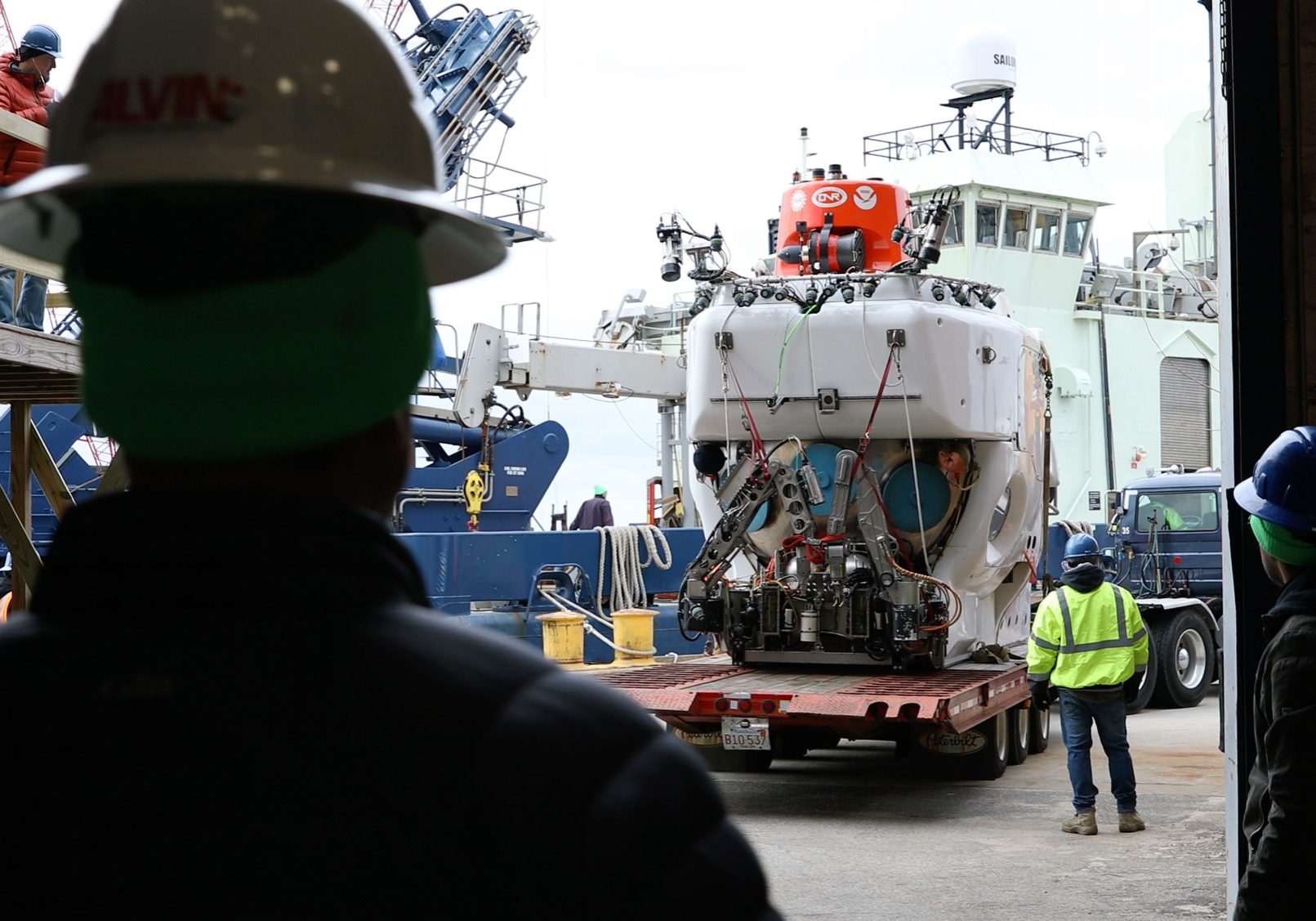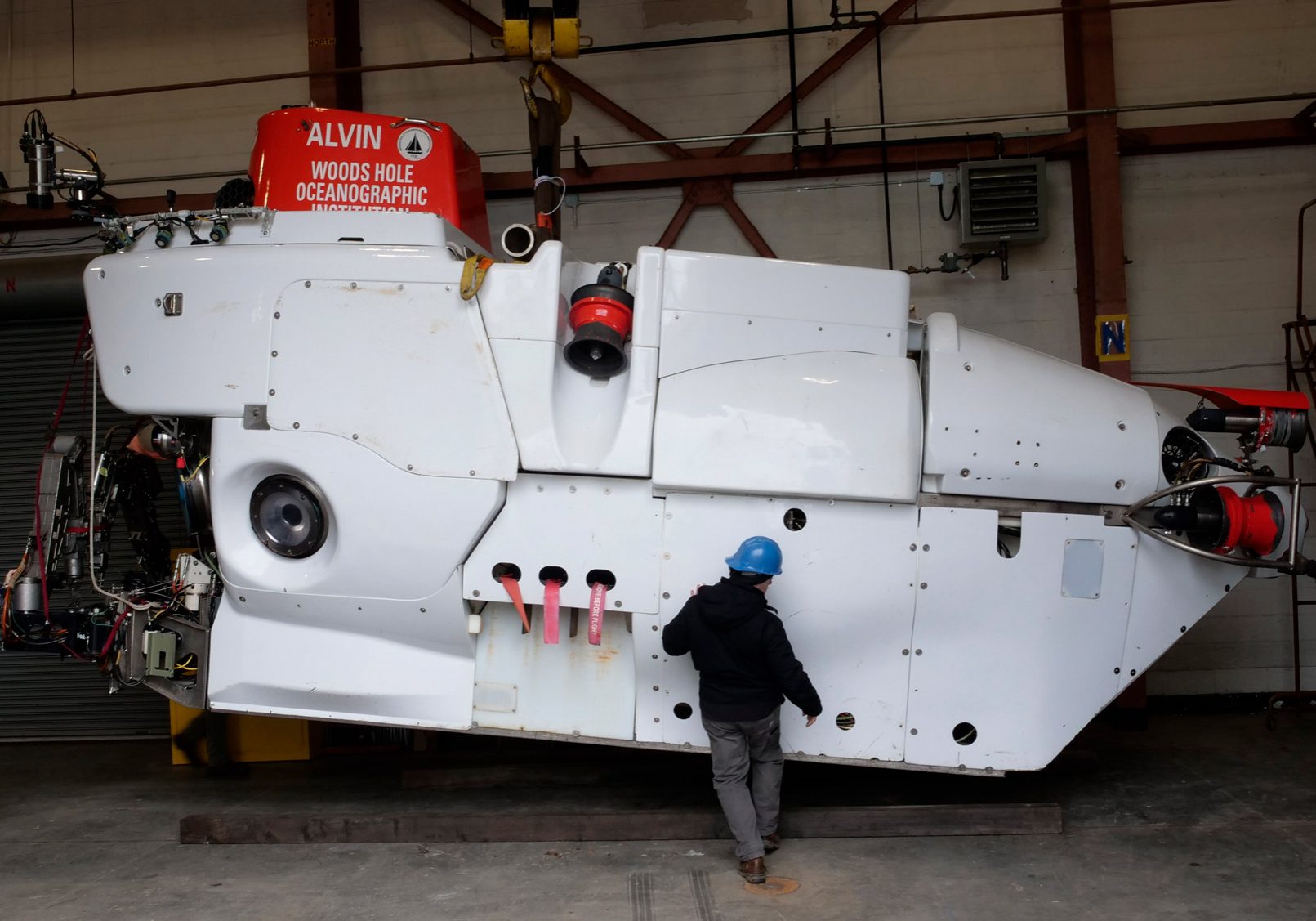HOV ALVIN REFIT
Shaping the direction of human-occupied discovery in the deep ocean
In September 2021 the human-occupied vehicle (HOV) Alvin completed the final phase of an overhaul that enables it to travel 6,500 meters below the sea surface-more than 4 miles deep and 2,000 meters deeper than Alvin's previous maximum depth. Preparing Alvin for this milestone began with a major upgrade in 2011 that replaced 70% of the sub's systems with ones rated to the new depth and finishes with the steps outlined here. The increased depth range gives scientific community unparalleled access to 99% of the global seafloor and enables in-person study of the abyssal zone-one of the least-understood parts of the deep sea.
Final steps to 6500 meters
- New titanium ballast spheres and syntactic foam modules rated to 6,500 meters
- Improved high-quality still and 4K video imaging systems
- More energy-efficient, fully redundant hydraulic system with increased pressure and flow rate and new hydraulic valve manifolds
- Higher-horsepower thrusters designed and built in-house and based on a proven WHOI design
- New motor controllers
- New pressure housings to complete upgrade to 6,500 meter operations
- Updated command-and-control system to integrate the new hydraulic and motor controller systems into Alvin's advanced digital piloting and control/monitoring interface
- Enhanced sampling capabilities with an additional manipulator arm
New Science questions for Alvin's deeper range
High-temperature hydrothermal processes
The physical limits on the temperature of hydrothermal fluids increases with depth. As a result, the abyssal seafloor may harbor the highest temperature vents on the planet, opening the possibility of discovering new geochemical processes, and probing the limits of life to potentially reveal compounds with medical application.
Deep seafloor ecosystems
Seafloor mining of manganese nodules on the abyssal plain, in places like the Clarion-Clipperton Zone, raise the possibility of disrupting or destroying fragile seafloor ecosystems with potentially important links to marine and planetary processes, and that host novel species and physiological properties.
Petit spot volcanism
A new form of volcanism, discovered in the last decade, occurs on subducting oceanic crust at abyssal depths. Studies of this process promise to shed new light on the interior our planet and the forces that shape its surface.
Transition to the Hadal Zone
Alvin's new depth capability puts the lower Abyssal Zone and the upper Hadal Zone within reach. This will give the science community an unprecedented opportunity to visit a critically under-studied part of the planet that plays a role in carbon and nutrient cycling and that also gives us a view into how life might be evolved to conditions in oceans beyond Earth.
The Alvin Group's mission is to support scientists studying they the world's oceans by providing consistent, reliable access to a state-of-the-art submersible for direct observation and experimentation of the deep seafloor. Based at WHOI, the Alvin Group is part of the National Deep Submergence Facility (NDSF) and includes mechanical, electrical, and ocean engineers, logistics and operations staff, as well as U.S. Navy-certified deep submergence vehicle pilots. The group supports all aspects of Alvin operations, including maintaining and piloting the sub while at sea, integrating new scientific sensors and instruments for specific missions to keep the sub at the forefront of ocean exploration and discovery, and designing and building new parts during each overhaul.
WHOI has operated, maintained, and improved Alvin on behalf of the national oceanographic community ever since a team led by WHOI engineer Allyn Vine built the submarine for the U.S. Navy in the 1960s. For more than 50 years and over 5,000 dives, the Alvin Group has kept up an unbroken lineage of knowledge and experience, giving the sub an unparalleled record of safety, reliability, and innovation, as well as enabling pathbreaking discoveries about the biological, chemical, and physical processes that support our planet and society.
Future Depth Range of HOV Alvin




